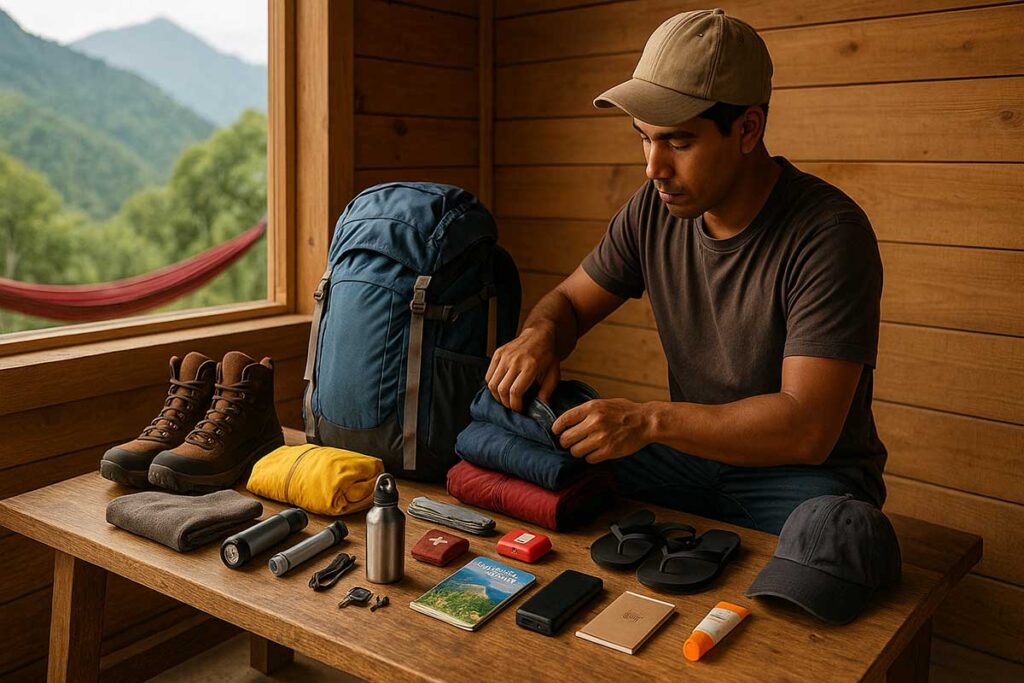What should a mountain backpacker carry?

Complete and practical guide to preparing your mountain gear: from the right clothing to every item in the backpack, with a focus on high-altitude climates like Ilamatepec (Santa Ana volcano) and surroundings.
Basic Principles and Layered Clothing
The basic principle for mountain gear is to balance lightness, functionality, and safety. You should only carry the essential, prioritize quick-drying materials, and organize the backpack so the weight doesn't hurt your back. Clothing requires a versatile layering system to adapt to any climate change. This system includes the Base layer (breathable) with dry-fit or merino wool material, avoiding cotton for retaining moisture; the Thermal layer (light warmth) such as fleece or merino wool sweater; the Insulating layer for intense cold or stops, like a compressible synthetic or down puffer jacket; and the Outer layer (protection), which must be a waterproof and windproof shell with high waterproof capacity. Elastic and quick-drying Trekking pants are recommended, as are technical Hiking socks (synthetic or merino) carrying an extra pair, a Sun hat/cap or thin thermal hat for altitude, light Gloves for wind or cold, and a Buff or tubular scarf to protect the neck and face. Footwear should be Trekking boots with an adherent sole and good ankle support, Approach shoes for less technical routes, and Sandals or crocs for rest and showering.
Backpack, Hydration, and Navigation
The main Backpack should be 30–40 L for day trips or 40–60 L for longer outings, complemented by a 15–25 L Daypack. It is crucial to carry a Waterproof cover and dry bags to separate clothing and electronics, and to distribute the weight correctly: the heaviest items close to the back and centered (water, food), the frequently accessed items at the top (waterproof layer, snack), and the bulky items at the bottom (puffer). Regarding Hydration and food, 2–3 L of Water per person is needed for a 4–8 hour day, in addition to having a method for Water treatment (filter or purification tablets). Snacks should be energy-dense (nuts, bars, chocolate) and Electrolytes are suggested to replenish salts if sweating heavily. For Navigation and orientation, you must have an offline Map loaded on your phone, an External battery, a Compass with knowledge of its use, and a clear Schedule for departure and return, always checking the time of sunset.
Protection, First Aid Kit, and Tools
Sun and Weather Protection includes Broad-spectrum sunscreen (SPF 50+) with constant reapplication, Mountain UV glasses, Insect repellent, Lip balm with sunscreen, and a quick-drying light Towel. The First Aid Kit must be compact and realistic, covering minor ailments and emergencies. It should contain Analgesic/anti-inflammatory (ibuprofen or paracetamol), Antihistamine, Antidiarrheal, and oral rehydration salts. For wounds, Antiseptic (chlorhexidine or iodine), sterile gauze, band-aids, hydrocolloid patches for blisters, Elastic bandage, adhesive tape, small scissors or knife, and prescribed Personal medication are needed. As Lighting and tools, a Headlamp with spare batteries, a Knife or multi-tool, a Lighter or ferrocerium rod (where fire is allowed) and a heavy-duty trash bag are essential. For Electronics and documentation, you must carry your Phone with offline map, power bank and cable, Identification, local cash, card and travel insurance with trekking coverage, in addition to Digital copies of documents.
Additional Considerations and Final Checklist
Some useful Additional Extras depending on the activity are Trekking poles, which reduce impact on descents, a Waterproof cover for the camera/phone, a Quick-access mini blister kit, and a Small tarp or poncho. Specifically for Ilamatepec and mountains in western El Salvador, you must prepare for a Changing climate with cold mornings, wind at the summit and mist, always carrying a waterproof and windproof layer. Due to the Volcanic terrain, you need a sole with good grip and caution with loose rocks. Given the Moderate altitude, constant hydration and a calm pace are required, always maintaining Respect for the environment, not leaving the trail or extracting flora. The Quick Checklist for the trip includes: Layered clothing (base, fleece, puffer, waterproof, pants, extra socks, hat/buff/gloves), Footwear (boots/shoes + sandals), Backpack (30–60 L + cover), Water and food (2–3 L + snacks + electrolytes + purification method), Navigation (offline map + power bank), Protection (sunscreen, UV lenses, repellent, lip balm), First Aid Kit, Lighting/tools (headlamp + batteries, knife, trash bag) and Documents (ID, insurance, cash). What to Avoid or Reduce: Cotton as a base layer, excessive spare clothing, "just in case" items that are never used, and Heavy containers (transfer to minis) are discouraged. Before leaving, it is vital to check the weather and the trail, communicate the itinerary, check battery charge/offline map, verify the first aid kit and water, and adjust the backpack straps and hip belt. In Conclusion, preparing well frees you up to enjoy: with layered clothing, hydration, a compact first aid kit, and an organized backpack, the route will be safer, more comfortable, and lighter, always remembering that in the mountains, less is more, but better.
